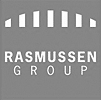Transforming Tradition - Community revitalization through sustainable renovation & historic preservation
Our Supporters
Blog Categories
Blog Archives
Get Involved

Find out how you can get involved
- Share this website with 10 people
- Mention Green & Main on your blog, Facebook, or Twitter
- Donate Products or Services








Great article! I am very tired of the idea that old buildings are inefficient and therefore should all be replaced. The notion that we can only use something, including houses & buildings, for 5-10 years is unsustainable. Disposable cups, plates etc are creating enough environmental problems without adding housing materials to overwhelm our landfills as well.
Do you know of any communities which have been able to stop or slow scrape offs? Our neighborhood in Denver is extremely popular and is in a building boom of structures that are out of proportion to the existing bungalows and homes built in early 1900s. We have pockets of historic districts, but even those sections have not been able entirely to stop the new box highrise style multiplex buildings developers seem to love to place in our neighborhood.